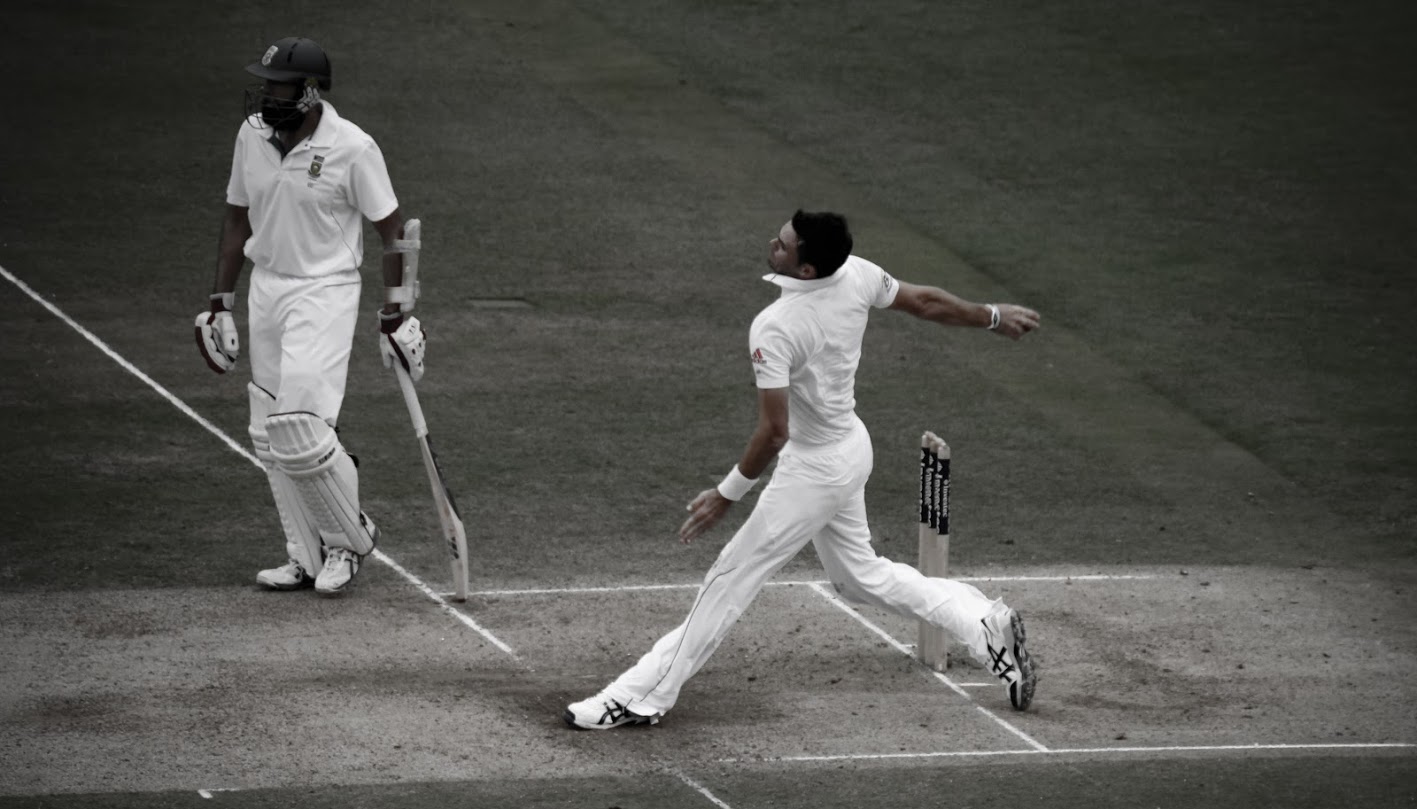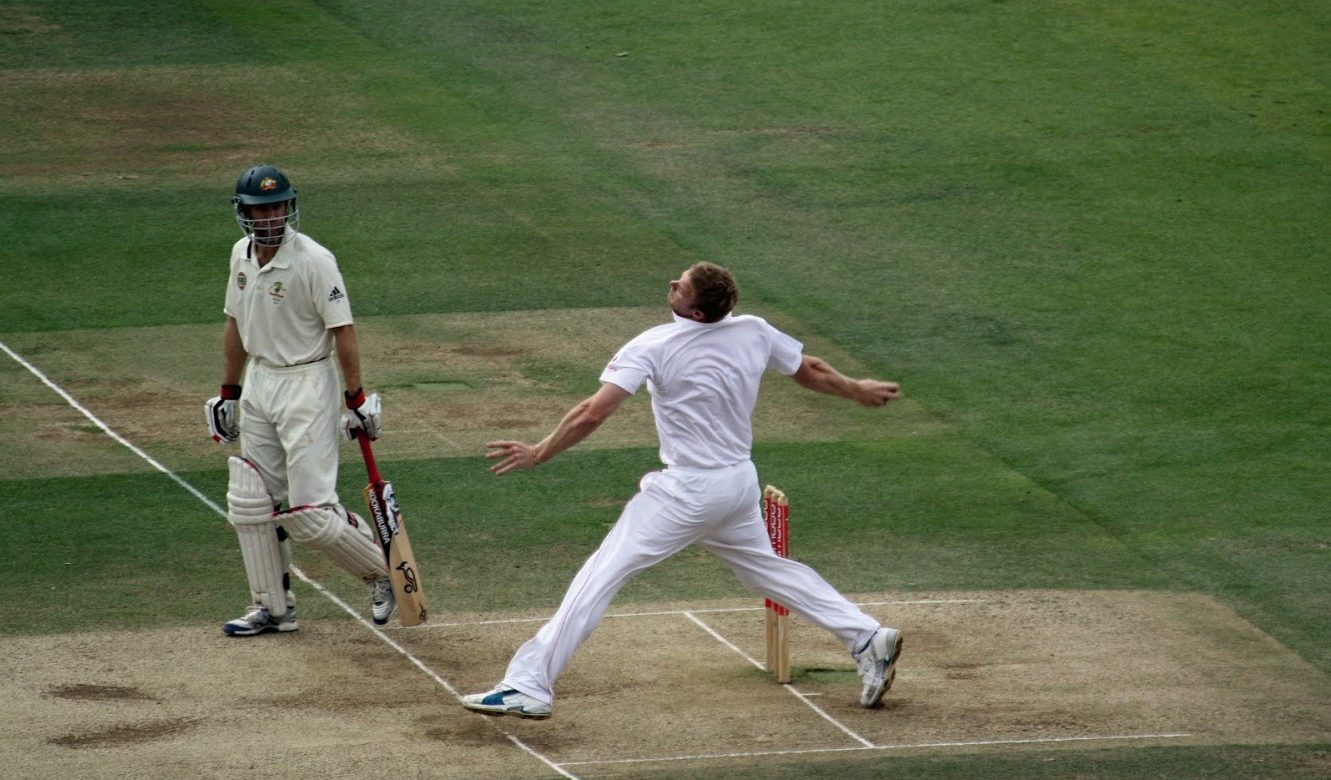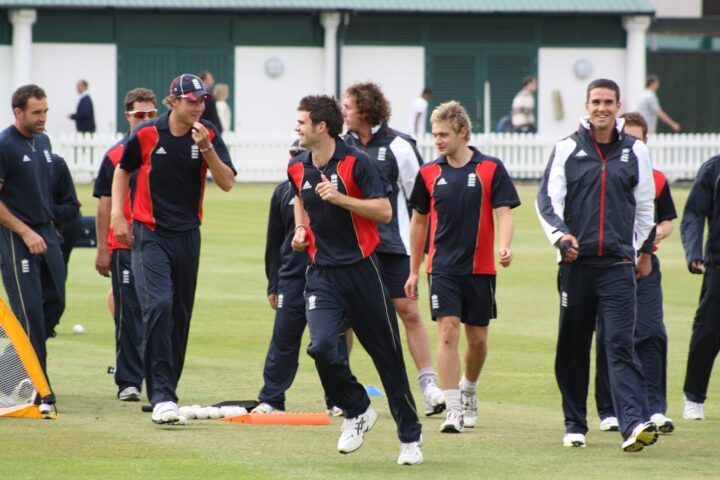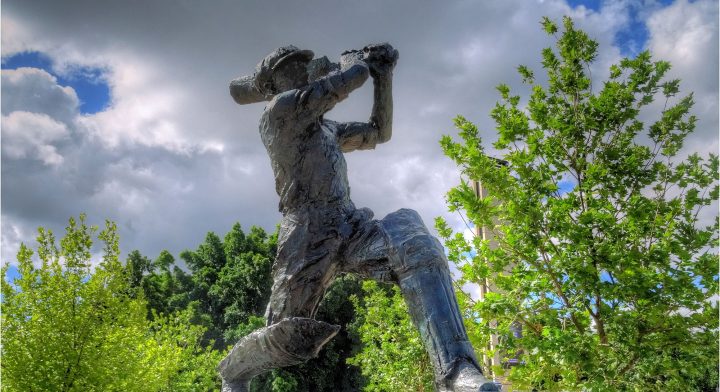At the dawn of this blog, James Morgan wrote about England’s worst XI, a team comprising players who before, during and since their test career confounded expectations by setting low standards and consistently failing to achieve them. There could have been many more on his list: nearly half of those who have played for England lasted only five tests or fewer. It is a moot point whether any deserved a longer career. A few of them could probably count themselves as victims of selectorial caprice: it has long been suspected that some players were left out because they didn’t fit in with the chaps.
Normally that sort of judgement would take place at the beginning of someone’s career, but England must have set some sort of record having twice dismissed their leading run scorer in international cricket (Gower, later Pietersen) for non-cricketing reasons. With each, it took more than a hundred tests for the selectors and management to work out that the player in question had personal defects disqualifying him from international duty, irrespective of his overall record, his recent form or the cricketing needs of the team.
Then there are players who have missed matches due to non-cricketing accidents. Ted Dexter ran himself over with his own car while he was pushing it, having run out of petrol. (Years later, as Chairman of Selectors, Dexter became the subject of the sort of pun the Sun excels at, when it ran the headline ‘Drop the Ted Donkey’.) The occasional New Zealand opener Trevor Franklin suffered horrendous leg injuries when he was struck by a baggage trolley at Gatwick Airport. Perhaps most bathetic of all, the West Indian allrounder Jimmy Adams sliced his own hand open on a flight to South Africa when trying to cut open a bread roll.
In a similar spirit, here is an XI comprising players who had cause to lament the hand of fate when looking back on their playing days.
1. Andy Lloyd (Eng). It involves no hyperbole to say that Lloyd faced one of the toughest debuts for any batsman in cricketing history when he took guard against West Indies at Edgbaston in 1984. He played competently against Marshall and Holding for half an hour – thus outperforming many a seasoned veteran – before misjudging one of Marshall’s lethal short balls and being struck on the temple. Despite wearing a helmet, he spent a week in hospital under observation, had a year off top level cricket and was never considered for test selection again. He is still the only batsman in history to open in a test innings and never be dismissed.
2. Ken Rutherford (NZ). Rutherford will have a few tales to exchange with Lloyd between overs, since he too faced Marshall and Holding on his test debut, in a selection call that surpassed even the average 1980s English decision in its rank stupidity. Unlike Lloyd, who was 27, playing on his home ground, and who had performed well against the same opposition in ODI matches before the series, Rutherford was aged just 19 with a solitary season of first class cricket behind him when he was called up as a last-minute replacement for a tour of West Indies. Since the player who had dropped out, Bruce Edgar, was an opener, the tour management compounded their idiocy by making Rutherford open as well (instead of asking a senior middle order player to step up). Finally, just to kick a man when he was down, Rutherford was run out without facing a ball in the second innings of his debut. New Zealand’s slender resources resulted in him playing all four tests, in which he compiled an aggregate of 12 runs – admittedly 12 more than most 19-year-olds would have managed against that attack. Unsurprisingly, he was dropped after the series, but returned to play more than fifty tests – some might say making him one of the luckiest cricketers in history, since his average as a specialist batsman was never above 30.
3. Alan Jones (Eng) has the proud record of 36,049 first class runs at 32.89, with 56 hundreds, but also an unwanted world record – the highest first class aggregate for someone never to play test cricket. His luck is actually worse than that, since he was chosen for England to play in the 1970 Rest of the World series, a fixture hastily arranged when a planned South African tour was cancelled as part of the long-term fallout from the D’Oliveira affair. Jones was awarded an England cap – only to lose the distinction when the ICC correctly removed test status from the series. (His physical cap was not returned, since it had apparently ‘gone missing’.)
4. Monte Lynch (Eng). Lynch was chosen for international duties in the 1980s, a time when the England selectors seemed to operate primarily by means of a dart board or a tombola. Lynch’s chances of a long career were, therefore, always going to be slim at best. He is primarily chosen here in solidarity with Ken Rutherford, since they both suffered from cricket’s ultimate version of ‘sod’s law’, being run out without facing a ball at the start of their career. In Lynch’s case it was at the hands of his captain Mike Gatting, making it tough for him to register a dressing-room complaint afterwards.
5. Lawrence Rowe (WI). It is hard to call someone who played 30 tests with an average of 43 unlucky, and to some extent the fact that things did not always work out Rowe’s way was his own doing. After an incredible debut (214 and 100 not out against New Zealand), he suffered against Lillee and Thomson, and despite scoring a triple century later in his career, never quite fulfilled his early billing as ‘the new Sobers’. He played in the Packer series and then, in the twilight of his career, chose to tour South Africa with the rebel West Indians. The latter decision instantly ended his international career and rendered him a pariah in his own country of Jamaica, even if in recent years a more nuanced view of those tours has been taken. But Rowe is included here because he suffered from a condition that was genuinely bad luck for any cricketer – he was allergic to grass. ‘If Lawrence sneezes, put the opposition in’ was the captain’s mantra whenever Rowe was in the team.
6. Brad Hodge (Aus) (C). One of so many Australians who missed out on a proper test career solely because of the era in which he played. Hodge did get a short crack at test cricket, and averaged over fifty in his six matches. The problem was the Australian team at the time simply didn’t need him, so he ended up with the same fate as Stuart Law, Michael DeVenuto and Michael Bevan among many others, just as a number of formidable West Indians had been left out during the Lloyd/Richards tenure. Had Hodge been from any other country he would in all probability have been a hundred-test veteran and captain, so he is chosen as captain here.
7. Wayne Phillips (Aus). Chosen as keeper, because that was the cause of his bad luck. Phillips was a fine batsman who was compelled to don the gloves by Australian selectors in the 1980s seeking an allrounder to give more balance to their side. Instead, all they managed to do was put a journeyman behind the stumps and hamper a promising batting career. Anyone who could smash a brilliant hundred against Lloyd’s West Indians in the Caribbean should have had a much better career than Phillips did. It was a tough call choosing Phillips ahead of Bruce French, the English keeper who was hit on tour in Pakistan by a spectator returning the ball in practice. He was taken to hospital but was struck by a car on his way in. He made it inside the hospital nonetheless, and had his wound stitched, but then bashed his head on a light fitting when standing up to leave. French’s bad luck continues by missing out here.
8. Don Shepherd (Eng). Shepherd is chosen as a suitable teammate for his fellow Welshman Alan Jones, because Shepherd holds the counterpart record for bowling, having taken the most first class wickets in history without ever playing a test. His perpetual omission was all the more surprising since his bowling record was really something, with 2,218 wickets at 21.32 for his mixture of off-spin and cutters. By way of some mitigation for his playing disappointments, he managed to enjoy a career as a commentator for Radio Wales after his retirement from playing in 1972.
9. Derek Pringle (Eng). Consistent with his senior positions in the Dribblers’ XI and the New Bothams, the allrounder Pringle is chosen here to give some much needed balance to the side, though it’s unsure whether he will do so by adding or subtracting. Pringle’s qualification for this team is on the basis of him suffering an injury in 1982 while he was sitting at a desk trying to arrange complimentary tickets to the Headingly test. His chair gave way and he suffered some serious back pain from the resultant fall. His bad luck was compounded by the fact that the team seemed not to take his injury seriously: England’s physio Bernard Thomas started a rumour that Pringle had suffered an injury ‘writing letters’.
10. Mick Lewis (Aus). You might say Lewis made his own lack of luck, having only a short international career before the Australian selectors lost faith in him. But his two worst outings, which finished his career before it had really begun, were both in record run chases where all the bowlers on both sides were slaughtered. Against New Zealand in 2005, Lewis went down for 1/77 as the Kiwis successfully chased down a target of 332. Yet that was almost Joel Garneresque in comparison with his final match against South Africa, in which his figures were 10-113-0. In fairness, those figures were in that one day match, when Australia failed to defend what had been a world record 431 (no side in history had even reached 400 in an official ODI before the match). Lewis made the reasonable point afterwards that if he’d been bowling pies, Ricky Ponting would have taken him off, and added that it just wasn’t a great day for bowlers. A new bowling style, then – right arm pies?
11. Mohammad Amir (Pak). Amir is still playing, and may yet earn a place amongst the great Pakistani fast bowlers such as Imran, Waqar and Wasim. But he had the appalling luck aged just 18 to be captained by a crook – Salman Butt – who co-opted him into a betting scandal that led to a prison sentence and robbed five years from his career in his prime. Michael Holding was reduced to tears on air when he concluded that Amir – a mere teenager at the time – had to have been forced into participating in spot fixing, the scourge that may yet destroy the international game altogether. Amir was rightly punished for his part in the crime, but it remains desperately sad that the verminous and utterly amoral match-fixers managed to gull him into cheating in the first place.
12. The selection of 12th man goes back to the dawn of test cricket, and one of its most famous names. Fred Grace was one of WG’s brothers, and he played alongside EM and WG in what was retrospectively deemed the first test match in England, at the Oval in 1880. Fred only managed a pair and did not bowl (though he had a fine first class bowling record). There was one highlight, a memorable catch from a ball hit so high the batsmen had turned for the third run before the ball reached him. During the course of the match, however, he contracted pneumonia, and died two weeks later, aged just 29.
And there lies a team united by misfortune of varying types and degrees, with a few bits of triumph in amongst the woe. Let’s hope they do not compound their bad luck by losing the toss.
© James Wilson 2018
James Wilson is the author of Court and Bowled: Tales of Cricket and the Law (WSH, revised edition 2017). His latest book is Noble Savages: The Savage Club and the Great War 1914–18 (JH Productions, 2018). His website is here.









Great article!
I’d pick almost anyone ahead of Derek Pringle – but how about Vince van der Bijl? Considered by many the best bowler never to win a Test cap (and his performance in his one season in the CC showed he wasn’t overrated) he was actually selected for SA’s cancelled tour to Australia in 1971/72. If not Van der Bijl, then Franklyn Stephenson would also be a good call.
There are many Aussie batting candidates from their golden generation of batsmen. What about Stuart Law who made an unbeaten 50 in his only Test innings? Or Jamie Cox who scored 18k f/c runs at nearly 43 with 50+ centuries and was never selected?
Then there are all the players who were unlucky enough to born in countries without Test status….
Meanwhile, a very good fightback from NZ after a long Azhar/Asad partnership has left the series’ decider in UAE evenly poised.
Franklyn Stephenson and Vince vd Bijl are good calls. Also Mike Procter.
Great stuff! On the Brad Hodge line you could also consider Stuart Law and Tony Gray who both had the misfortune to play in an era when their country had a surplus of their kind of talent. Gray played just 5 tests for West Indies in the 1980’s taking (I think) 22 wickets at about 17 each. Colin Milburn might be another for the team after losing an eye in a car crash at the height of his career.
I’ve heard that Monte Lynch was capped because, at a selection meeting, Gatting’s “I want lunch” was misheard….
LOL
The Lawrence Rowe story and the 1982 West Indies tour of South Africa is tragic. Check out the story of Richard Austin for example. Stephenson never played for West Indies because he went on that tour (for the money as all the players did).
Here’s another one – the original ‘Jack’ Russell. This was Russell’s last Test:
http://www.espncricinfo.com/series/17611/scorecard/62538/south-africa-vs-england-5th-test-england-tour-of-south-africa-1922-23
So he
1) Played two crucial innings to win the series’ decider away from home.
2) Became the first Englishman to score hundreds in both innings of a Test – a feat still only achieved ten times by English batsmen. It was also only the second time anyone had every managed it (after Warren Bardsley).
3) Russell scored his second century batting out of position because of illness. It’s also worth noting that only one other England batsman scored a fifty in the match.
And Russell never played for England again! Not only did he have this feat but his average was over fifty and he’d scored three centuries against Australia! The reason? While he was recovering from the illness, England, who already had Jack Hobbs, discovered some bloke called Herbert Sutcliffe….
Hi Simon, having just written a book on WWI I was intrigued by your mention of Russell. I have asked the Great War Forum and as usual the crack historical sleuths have uncovered some fascinating info on him:
https://www.greatwarforum.org/topic/267973-charles-albert-george-jack-russell-england-cricketer/?tab=comments#comment-2716410
Great fun! Thanks.
Many thanks all for the comments. You could make up three very strong teams, composed of South Africans denied a career by Apartheid (Barry Richards, Graeme Pollock, Clive Rice, Jimmy Cook and Peter Kirsten I’d mention along with Van Der Bilj and the others – I think there was talk at one point of Mike Proctor qualifying for England); West Indian spare players of the Lloyd/Richards era – a number of whom went on the rebel SA tour – and Australians from the Taylor/Waugh/Ponting golden years of whom I’d chosen Brad Hodge.
I’ll grant you that Derek Pringle was probably _lucky_ rather than unlucky to play as many tests he did whilst making no discernible contribution. His selection was a bit tongue in cheek – I was trying to keep continuity since he was selected for the Dibbly Dobblers XI and the New Bothams. Plus, as explained, his bad luck was in falling over whilst writing letters.
Jack Russell the First was a very interesting tale – the only thing I’d add is that he was 35 when he played that innings against South Africa, and like so many others he lost four potential cricketing years due to the First World War.
If you’d played any cricket with James Morgan circa 1993/94 you might have considered an opening spot for him!
It wasn’t me that was unlucky. It was my teammates.
Going back a bit – Archie Jackson. Debuting at age 19 in the same Ashes series as Don Bradman, made 164 opening against Harold Larwood and Maurice Tate. At age 23 he was dead of tuberculosis.
Alan Jones certainly a deserving entry – a little similarly, Indian player CC Williams. Played in the game scheduled to be the 3rd test of India’s tour of Sth Africa in 2001. Never played a test for India before or since that game. But not a one-test wonder – the game he played was stripped of test status because India and Sth Africa refused to accept the ICC’s appointee as match referee, Mike Denness (the Indian team was aggrieved by Denness’ decisions against a number of their players arising out of incidents in the second test).
A couple of oldies worth a mention here would be VJ Merchant the prolific Indian batsman who’s injury hit career was cut short by the war with just 10 tests, despite having the best first class average of any player, Bradman apart, but surely the most unlucky in terms of stats would have to be Gloucestershire’s Charlie Parker, a left arm spinner who took over 3000 wickets in over 30 seasons and is still the 3rd highest wicket taker in first class cricket history. He played just one test, taking 2 wickets in 28 overs,16 of them maidens. Wonder what excuse the selectors would have had for that one. Eat your heart out Jack Leach.
Parker was certainly unlucky, but his fate also is a reminder that even today’s selectors are only channelling their predecessors. That series, the 1921 Ashes, saw 7 players (including Parker) selected who ended up with only one test in their entire careers.
I rather think that an entire team could be made up of all those who were unlucky enough to have to play with Prior and Swann and endure the awful clique that they led.
I would also suggest Jack Richards for the keeper slot. A man whose entire career was finished at the age of 29 when Surrey, no doubt put up to it by Daddy Stewart, refused to extend his contract only a season after he was scoring a century in test cricket. Odd that the gloves passed to Alec!
However, on the somewhat wider issue of unlucky teams in the wider sporting arena I would offer the West Brom players of the mid-2000s who included a player sidelined when his teammates broke his foot celebrating a goal, Geoff Horsfield spraining his ankle being tackled by a traffic cone in training, and 3 players being put out for several weeks when the groundsman put fertiliser on the training pitch and it got in their eyes.
Very good day for NZ means the last day of the PvNZ series could be a damp squib – although some sort of a classic is still possible.
Some strange tactics (especially not taking the second new ball) and dropped catches didn’t help Pakistan.
The mention of Larwood in one of the posts makes me think he has a strong claim to be in the team. In the Bodyline series he followed his captain’s instructions, who was operating with the full knowledge and support of the execrable Plum Warner as manager. Larwood was a large reason why England won the Ashes…….yet he never played for England again. In the 1934 series Larwood was set to be picked but the MCC demanded he apologise for bowling bodyline on the tour! Naturally he refused, and was not picked. Even by MCC (and later ECB) standards this was hypocrisy and disgraceful behaviour of the highest order and Larwood must be counted unlucky to have lost his test career due to the dishonesty of the games rulers.
Agree with Larwood – shafted by the class system that riddled the game at the time (Gubby Allen as a gentleman amateur didn’t have to follow orders in the same way). Ironically – though not surprisingly – Larwood came to prefer living in Australia.
I also agree with Larwood, whose treatment was despicable.
Hi,
I’m interested in buying advertising space on your website.
Due to the editorial quality of your website, it has been selected to our exclusive special CPM offer, that can go up to $2.00 USD.
Regards,
Henrique Moreira
Email henrique.moreira@directadx.com
Don’t post that spam here please.